Currants are one of the most common berry bushes grown in summer cottages. Currently, there are a huge number of varieties. Each band has its own varieties adapted to the growing conditions in a given region.
General requirements for currants grown in the middle zone
When choosing currants for a summer cottage, you should pay attention to the characteristics of the variety.
- Winter hardiness. The shrub must withstand even long winter thaws without damage, while still growing.
- Frost resistance. For the Moscow region and the middle zone, varieties are selected that can withstand frosts below -30°C.
- Resistance to spring frosts. For the middle zone and Moscow region it should be high.
- Resistance to pests and diseases. Most often in the middle zone, shrubs are affected by bud and spider mites, anthracnose, and rust. Therefore, varieties grown in a given region must be resistant to these factors.
- Self-fertility. The vast majority of varieties are self-fertile, but, like other crops, they give better yields when several varieties are grown together.
- Productivity. The variety is considered productive if 3 kg of berries (for black currants) and 3.5-4 kg (for red and white currants) can be collected from one bush.
- Large fruit. The variety is considered large-fruited if the average berry weight is not less than 2 g for black and 0.5 g for white and red.
- Ascorbic acid content. The more it is, the higher the value of the variety. But this is a somewhat arbitrary indicator. On average, the vitamin C content per 100 g of berries is 150 mg for black and 40 mg for red and white. But in dry summers its content decreases by 25-30%, and in rainy and cold summers it increases by the same percentage. In the phase of technical ripeness, the content of ascorbic acid in berries is maximum, and in overripe ones it is significantly less.
The best varieties of currants, with proper care, reveal all their varietal qualities.
Classification of varieties by ripening time
According to the ripening period, currant varieties are divided into:
- early - flowering begins in early May, and mature fruits appear by mid-late June;
- medium - bloom in mid-May, fruiting begins at the end of June and lasts 2 weeks;
- late - flowering begins at the end of May, fruiting begins in mid-July.
When choosing a variety for growing in your summer cottage, you should definitely take these terms into account. Early varieties in the Moscow region and the middle zone are very often damaged by spring frosts, which can lead to the loss of half the currant harvest. Late ones are affected by pests and diseases, which also leads to crop loss, and treating the bushes with pesticides does not allow eating and processing the berries directly from the bush. In this case, it is necessary to wait a certain period until the amount of pesticide on the treated bushes decreases to a safe level.
The best option for the Moscow region is to plant mid-early, mid- and mid-late varieties on the site. This makes it possible to receive fresh currants all summer long.
The best varieties of blackcurrant for the Moscow region and the middle zone
This berry bush is found more often than other types of currants. It was cultivated back in the Middle Ages, first for medicinal purposes, and then as a berry plant.
Nara
A variety of universal use, early ripening. The bush is medium-sized, slightly spreading. Flowering occurs in early May, fruiting begins in mid-June.
The length of the brush is average. The fruits are black, medium and large. The pulp is greenish, with a pleasant sweet and sour taste and aroma. This variety of black currant is recommended for growing in the Moscow region and the middle zone.
- yield 3.8-4 kg/bush;
- the weight of the berry is very uneven from 1.3 to 3.3 g;
- vitamin C content 179 mg/%;
- substance content: sugar 6.8%, acid 2.5%.
Advantages. High winter hardiness. Resistance to terry mildew, powdery mildew, anthracnose. Moderately resistant to kidney mite.
Flaws. Unevenness of fruits. Early flowering due to which some of the flowers may be damaged by spring frosts (but due to long flowering (2-2.5 weeks), the entire harvest is never lost). In prolonged cold weather (0…+5), the ovaries may fall off.
Openwork
The variety is universal, mid-season. The bushes are medium-sized and slightly spreading. The cluster is medium with a frequent arrangement of berries.
The fruits at technical ripeness are black, round-oval. The pulp is sweet and sour.
- high yield 4.5-5 kg/bush;
- berry weight 1.4-2.0 g;
- vitamin C content 158.9 mg/%;
- substance content: sugars 7.9, acids 3.3.
Advantages. Frost resistance is high. Practically not damaged by pests and not affected by diseases. Good taste (4.5 points).
Flaws. The berries are small. Their ripening is uneven.
Belarusian sweet
An old Soviet variety, it was bred in the Belarusian SSR in 1967. It has taken root well in the middle zone and Moscow region, with an average ripening period. The bushes begin to bear fruit already in the second year. One of the best varieties of currants.
Self-fertility is high (up to 60%). The bushes are tall, spreading, dense. The leaves are light green with a yellowish tint (this is a feature of this variety). The length of the brush is medium, it contains 6-8 berries. The fruits are black, round-oval, shiny. The taste is sweet and sour.
- yield 3.7 kg/bush;
- berry weight 1.2-1.6 g;
- vitamin C content 200-300 mg/%;
- substance content: sugar 11.7%, acid 1.03%.
Advantages. Very high taste (5 points), good yield.The variety is the record holder for the content of ascorbic acid in berries. Good winter hardiness. Very resistant to powdery mildew. Moderately resistant to anthracnose. The fruits retain their flavor when canned.
Flaws. The fruits are small. Flowers are often damaged by spring frosts. Weak resistance to bud mites and rust.
Oryol Waltz
This variety of currants grows quite well in the middle zone and the Moscow region. Late ripening.
The bushes are medium-sized, slightly spreading. Fruit raceme of medium length. The fruits at technical ripeness are black, at the stalk they are black-brown and round. The taste is sweet and sour.
- yield from medium to high: 2.7-3.2 kg/bush;
- berry weight 1.4 g;
- vitamin C content 167 mg/%;
- substance content: sugar 8.0%, acid 3.1%.
Advantages. High winter hardiness, resistance to rust, powdery mildew, anthracnose.
Flaws. Affected by kidney mites. The berries are average or less than average, but this disadvantage is compensated by a fairly high yield.
Blackcurrant has a fairly clear pattern: the larger the berries, the lower the yield. Conversely, varieties with medium berries yield quite high yields.
Viola
Currants of foreign selection. It was released in Czechoslovakia in 1987.
Early ripening, universal purpose. The bushes are medium-sized, spreading. Productivity is high. The berries are large, black, with a waxy coating. The pulp is greenish-yellow, sweet and sour.
Advantages. High winter hardiness. Good taste, high yield.
Flaws. Average resistance to powdery mildew, anthracnose, mold. Tolerant to drought.
Red currant varieties for the Moscow region
This type of currant is the second most common, after black. There are significantly fewer varieties of it (as of 2017, only 37 varieties were entered into the State Register), although it is more unpretentious than black currant.
Versailles red
Ancient French currant of mid-early ripening. The bushes are powerful, tall, durable, fruiting begins in the 3rd year of cultivation. Full fruiting occurs in 6-7 years.
The clusters are long, with 13-15 berries, collected in clusters. The fruits are large, dark red, juicy, and almost do not fall off. The taste is gently sour, refreshing. If there is a delay in picking, the taste of the berries increases. The seeds are small. Productivity is high.
Advantages. Currants are large-fruited and productive.
Flaws. Not resistant to anthracnose. Requires high cultivation technology. Not resistant to drought.
Chulkovskaya
Russian variety of folk selection. It grew in gardens even before the revolution; from 1947 to 2006 it was included in the State Register. Now Chulkovskaya is not in the register of varieties, but it is still available for sale; many private nurseries continue to grow planting material. Currants grow well in the middle zone, the Moscow region, and the north-west.
Early ripening, technical purpose. The bushes are powerful, dense, slightly spreading. The fruits are medium and large, translucent, bright red. Ripening is smooth, the fruits practically do not fall off. The taste is satisfactory. Berries are more suitable for canning and processing than for fresh consumption.
- yield 4-6 kg/bush;
- berry weight 0.4-0.7 g;
- vitamin C content 62.0-45.0 mg/100 g.
Advantages. High transportability, good shelf life (up to 5 days). Frost- and drought-resistant, highly self-fertile. Resistant to anthracnose. Early fruiting and high yield.The fruits make excellent jam and compotes.
Flaws. Mediocre taste of fresh berries. The winter hardiness of the bushes is average. Insufficient resistance to powdery mildew and terry. Flowers can be damaged by spring frosts.
Osipovskaya
A relatively new variety of late ripening, universal use.
The bush is tall, medium spreading. Medium brush. The fruits are dark red, round-oval, one-dimensional. The taste is sweet and sour.
- yield 5-6 kg/bush;
- berry weight 0.6 g;
- vitamin C content 42.9 mg/5;
- substance content: sugar 6.61%, acid 1.97%.
Advantages. High yield, winter hardiness. Good heat resistance. Osipovskaya currant is immune to powdery mildew. Compotes, jam and juices are of excellent quality.
Flaws. Affected by leaf spots.
Scarlet Dawn
Although this currant was bred for cultivation in the Ural region, it feels good not only in the Moscow region, but also in the middle zone in general. Medium ripening period.
The bushes are medium-sized, not spreading. The fruits are large, smooth, red. The taste is sweet and sour (4.5 points), refreshing. Universal purpose.
- yield 5.5-6.5 kg/bush;
- berry weight 0.6-1 g;
Advantages. High yield, large fruit, good taste. The variety is winter-hardy, resistant to diseases and pests.
Flaws. Very large fluctuations in yield from year to year.
Baraba
Currants of domestic selection. It was released in the early 2000s. It grows well in the middle zone and does not freeze.
Medium ripening, universal purpose. The bushes are medium-sized, not spreading. The shoots do not peel off. The brushes are long. The fruits are round, large, red. The taste is sweet and sour with a predominance of acid (4.1 points).
- yield 2.7 kg/bush with compacted planting;
- berry weight 0.7-1.5 g;
- vitamin C content 50 mg/100 g;
- substance content: sugar 9.7%, acid 1.%.
Advantages. Large fruit, good taste. Drought resistant.
Flaws. Affected by septoria and anthracnose. In the absence of chemical treatments, you can lose not only the crop, but the entire plantation.
A very common variety, Dutch Red, is resistant to diseases and pests, produces high yields, but its berries are very sour and small. Because of this, these currants are not of great value.
White currant for the Moscow region
White currants are very similar to red currants in terms of the structure of the bushes and requirements for climatic factors. Until recently, it was considered a variety of red currant, only with white berries. Now it is classified as an independent group, although some breeders continue to consider it just a subspecies of red-fruited varieties.
Almost all varieties included in the State Register can be grown in the Moscow region and the middle zone. They are quite winter-hardy and frost-resistant and can perfectly tolerate unfavorable factors in these conditions. Foreign varieties (in particular, Ukrainian ones) can tolerate winter conditions well with shelter.
Smolyaninovskaya (white Smolyaninovskaya)
Currants were bred in the mid-90s using intervarietal crosses. Grows well in the Moscow region, the middle zone and the north-west.
Smolyaninovskaya, medium-early ripening, universal purpose. The bushes are medium-sized, rather spreading. Fruit clusters of medium length. The fruits are round-oval, translucent, white. The taste is sweet and sour, refreshing (4.7 points).
- yield 3.3 kg/bush;
- berry weight 0.6 g;
- vitamin C content 32.6 mg/%.
Advantages. Good yield, excellent taste. High frost resistance. Resistance to powdery mildew.
Flaws. Affected by anthracnose.
Bayana
The currant was obtained in the mid-2000s. Late ripening.
The bushes are vigorous, dense, slightly spreading. Annual shoots have a reddish tint. The berries are large, smooth, round, white, translucent. The taste is pleasant sweet and sour. Seeds are few in number, orange in color.
- yield 2.2 kg/bush;
- berry weight 0.5-0.7 g;
- vitamin C content 40.3%;
- substance content: sugar 7.6% acid 1.8%.
Advantages. Good yield, dessert qualities of fruits. High winter hardiness, resistance to powdery mildew.
Flaws. Affected by red gall aphids. Affected by leaf spots.
Snezhana
Currant of Ukrainian origin. In the middle zone it winters with shelter. In severe winters it can freeze.
Medium ripening, universal purpose. The bushes are medium-sized, slightly spreading. The brushes are long and very thick. The fruits are one-dimensional, white, transparent, large, with thin skin. The taste is refreshing, pleasant, sweet and sour. Ripening is amicable, the currants practically do not fall off. Snezhana is suitable for storage, processing, canning, and freezing.
- berry weight 0.6-0.8 g;
- vitamin C content 84 mg/%;
- substance content: sugar 5.5-8.2%, acids 1.2-1.3%.
Advantages. High winter hardiness and drought resistance, good heat resistance, resistance to powdery mildew, septoria, anthracnose. High yield, good taste of fruits. Suitable for storage (5-7 days).
Flaws. Insufficient frost resistance in the conditions of the Moscow region and the middle zone.
Umka
Currants of mid-early ripening, universal use. The bushes are medium-sized, spreading, medium-dense.
The fruits are large, smooth, white with a yellowish tint, transparent, with thin skin. The number of seeds is medium, they are large and orange in color. The taste is sweet and sour, pleasant (4.6 points).
- yield 2.5 kg/bush;
- berry weight 0.8-1.0 g;
- vitamin content 54.0 mg/100 g;
- substance content: sugar 9.5%, acids 1.6%.
Advantages. Excellent taste, very high winter hardiness, sufficient frost resistance. Good heat resistance. Resistant to powdery mildew and gall aphids. It has proven itself to be excellent in the Moscow region.
Flaws. Drought resistance is average. Insufficient self-fertility (30-35%), pollinating varieties are required to increase productivity.
Rose Chair
This currant is classified either as a red or a white variety. The color of its berries ranges from white with reddish streaks to white-pink. Color may vary slightly from year to year.
Rose Chair is medium ripening, universal purpose. The bushes are medium-sized, of medium density, slightly spreading. The fruits are medium and large, smooth, round, translucent, white-reddish in color (sometimes red-white, the color depends on the light). The taste is sweet with a slight sourness.
- berry weight 0.5-0.8 g;
- the yield is average.
Advantages. Excellent dessert taste of the fruit. Resistant to septoria.
Flaws. The yield is not very high. Affected by powdery mildew and anthracnose.
For a family of 3-5 people, 3-4 currant bushes of each type are enough to have berries all summer long.
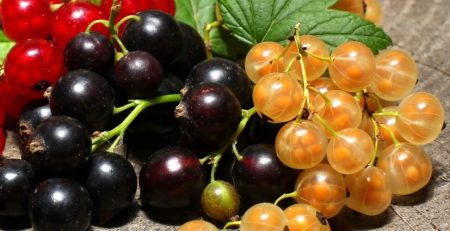
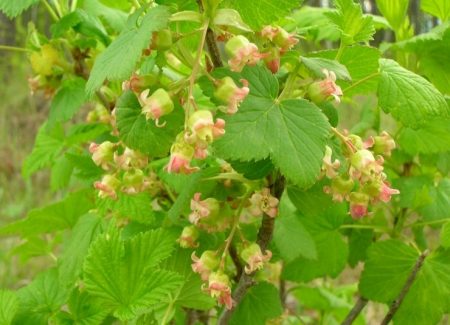
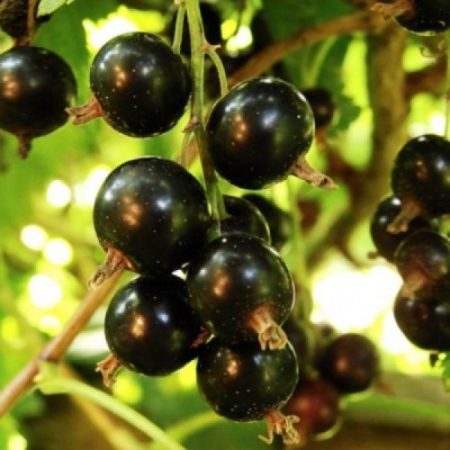
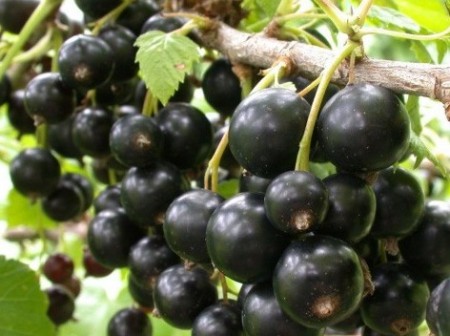
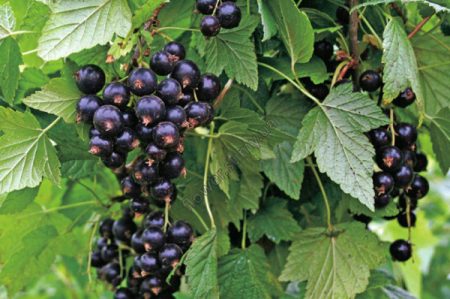
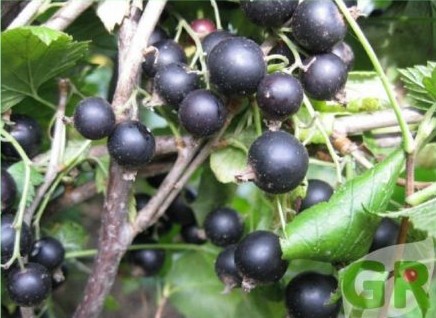
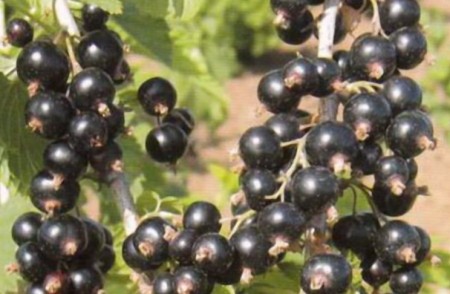
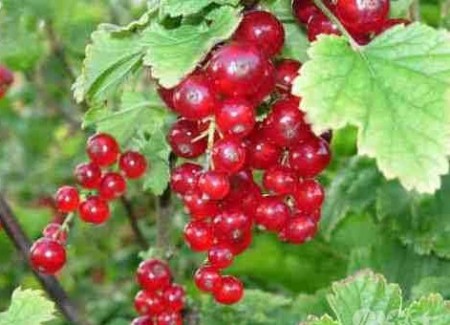
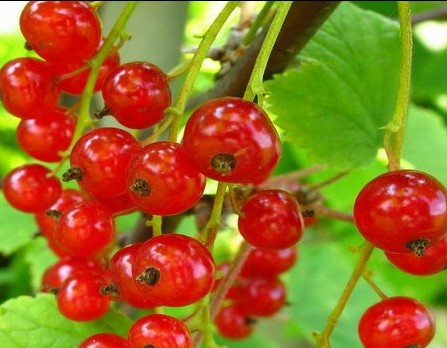
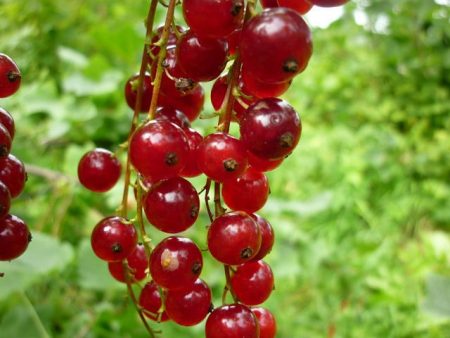
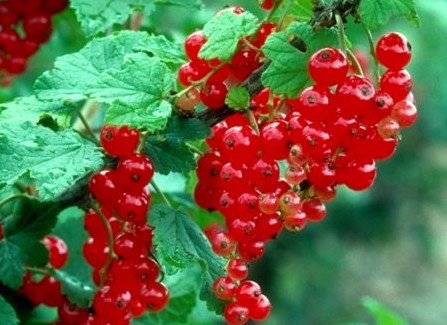
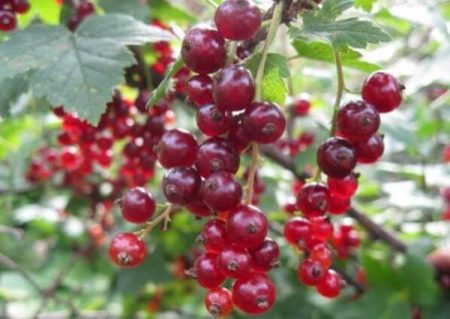
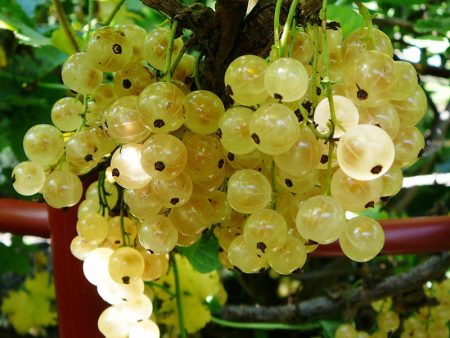
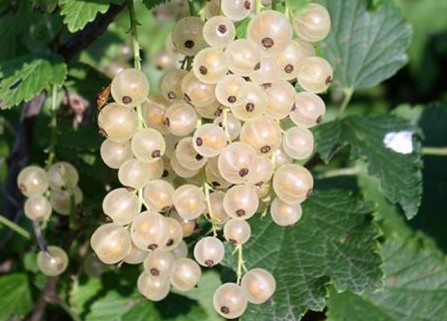
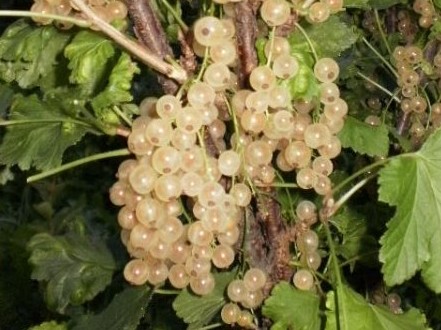




 CUCUMBERS NEVER GET SICK, I'VE BEEN USING ONLY THIS FOR 40 YEARS! I SHARE A SECRET WITH YOU, CUCUMBERS ARE LIKE THE PICTURE!
CUCUMBERS NEVER GET SICK, I'VE BEEN USING ONLY THIS FOR 40 YEARS! I SHARE A SECRET WITH YOU, CUCUMBERS ARE LIKE THE PICTURE! You can dig a bucket of potatoes from each bush. Do you think these are fairy tales? Watch the video
You can dig a bucket of potatoes from each bush. Do you think these are fairy tales? Watch the video
 How our fellow gardeners work in Korea. There is a lot to learn and just fun to watch.
How our fellow gardeners work in Korea. There is a lot to learn and just fun to watch. Eye trainer. The author claims that with daily viewing, vision is restored. They don't charge money for views.
Eye trainer. The author claims that with daily viewing, vision is restored. They don't charge money for views. A 3-ingredient cake recipe in 30 minutes is better than Napoleon. Simple and very tasty.
A 3-ingredient cake recipe in 30 minutes is better than Napoleon. Simple and very tasty. Therapeutic exercises for cervical osteochondrosis. A complete set of exercises.
Therapeutic exercises for cervical osteochondrosis. A complete set of exercises. Which indoor plants match your zodiac sign?
Which indoor plants match your zodiac sign? What about them? Excursion to German dachas.
What about them? Excursion to German dachas.